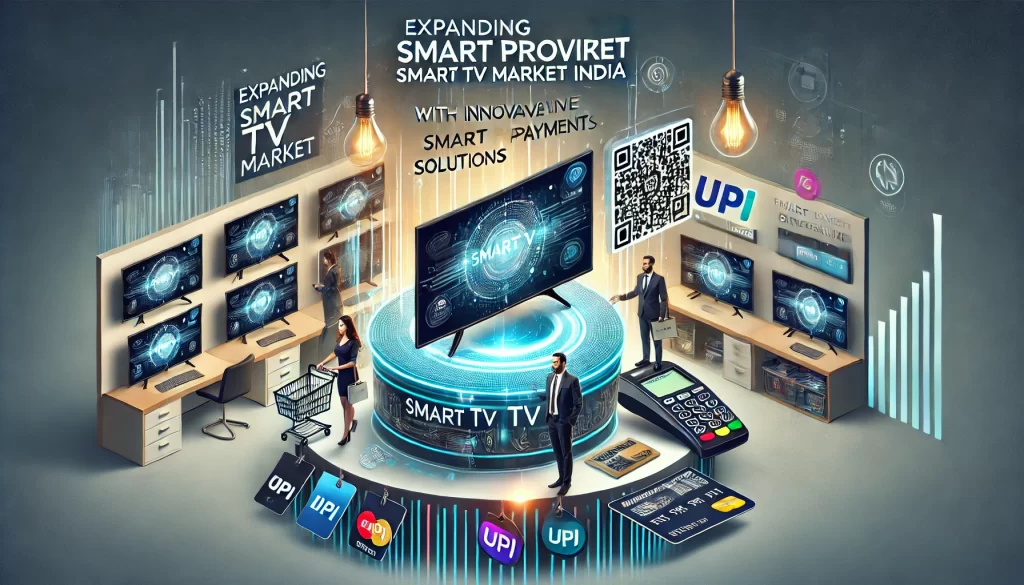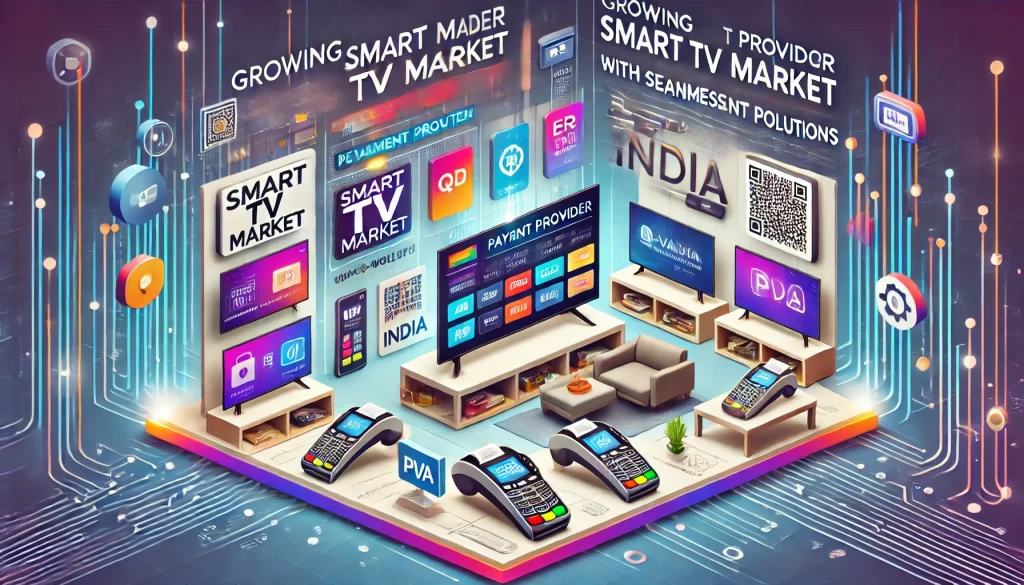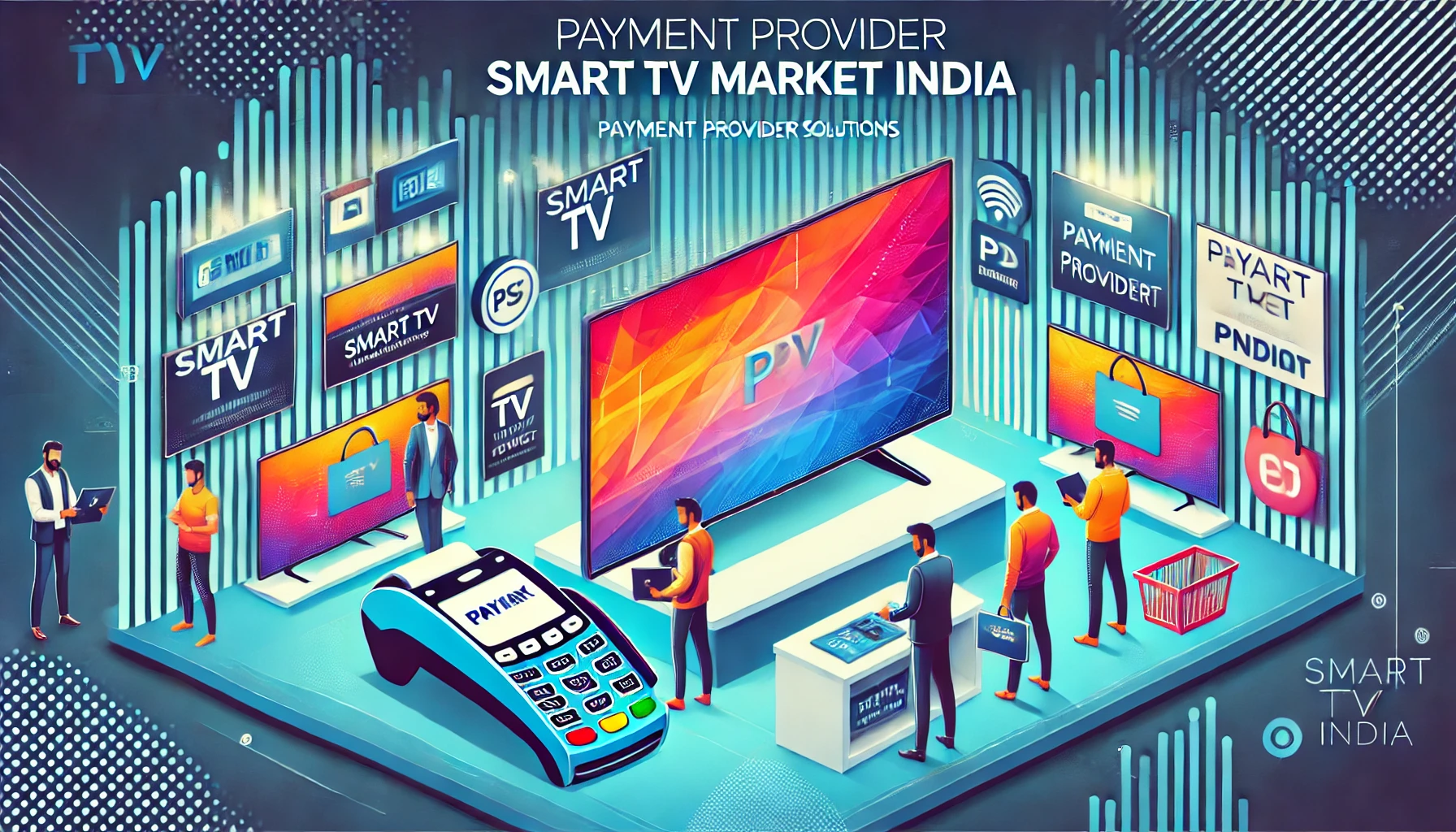AUTHOR: AYAKA SHAIKH
Introduction
Smart TVs have rapidly become the cornerstone of entertainment in Indian households. These advanced televisions bridge the gap between traditional viewing and digital content consumption, transforming how people experience media. But smart TVs are not just about streaming shows or playing games—they are now facilitating online shopping, interactive learning, and even financial transactions. At the heart of this digital revolution are payment providers, enabling seamless, secure, and user-friendly transactions.
Understanding the Smart TV Market in India
Growth Trends and Key Statistics
The Indian smart TV market has witnessed unprecedented growth over the last decade. According to industry reports, smart TV sales accounted for over 90% of total television sales in urban areas by 2023. The penetration of affordable smart TVs, coupled with declining internet costs, has fueled this growth. Furthermore, rural markets are beginning to embrace this technology, driven by increasing digital literacy and government initiatives promoting internet access.
Factors Driving Smart TV Adoption
- OTT Dominance: Platforms like Netflix, Amazon Prime, Disney+ Hotstar, and SonyLIV have become household names, pushing people toward smart TVs to enjoy high-quality streaming.
- Affordable Pricing: Budget-friendly smart TVs from brands like Xiaomi and Realme have made them accessible to middle-class households.
- Technological Innovations: Features like voice assistants, 4K displays, and IoT connectivity attract tech-savvy consumers.
What Are Payment Providers?
Definition and Role
Payment providers are entities that facilitate digital payments between users and businesses. In the context of smart TVs, they enable consumers to pay for subscriptions, in-app purchases, and even goods and services directly through their televisions.
Types of Payment Providers Relevant to Smart TVs

- Digital wallets: platforms like Paytm and PhonePe allow users to store money digitally for transactions.
- UPI-Based Providers: Apps like Google Pay and BHIM make instant bank-to-bank transfers possible.
- Credit/Debit and debit card processors: Built-in payment systems support Visa, Mastercard, and RuPay transactions.
- Subscription Services: Payment systems integrated with OTT platforms for recurring payments.
Integration of Payment Providers with Smart TVs
How Smart TVs Enable Digital Payments
Smart TVs come pre-loaded with apps for streaming, gaming, and shopping, all of which require payment systems for monetization. Payment providers are integrated through APIs or built-in platforms, enabling users to complete transactions using their preferred payment methods[1] without switching devices.

Real-Life Examples
- Amazon Fire TV Stick: Enables payments through Amazon Pay for Prime Video and other services.
- Xiaomi’s PatchWall Interface: allows seamless payment for in-app purchases via Paytm or UPI-based options.
- Sony Bravia offers integration with Google Pay and other UPI services for transactions.
Key Features Payment Providers Offer for Smart TVs
Seamless User Experience
Smart TV payment systems are designed for simplicity. For example, users can make a payment with just a few clicks or by scanning a QR code on their mobile phones. Security remains a priority. Payment providers[2] on smart TVs leverage advanced technologies like:
- End-to-end encryption
- Fraud detection systems
- Two-factor authentication
Multi-Device Syncing
Many payment providers allow users to sync payment data across devices. This means you can start a transaction on your smart TV and complete it on your smartphone, ensuring convenience and flexibility.
Popular Smart TV Brands in India and Their Payment Ecosystems
Samsung Smart TVs[3] come integrated with Samsung Pay, which is tied to their ecosystem. They also support other platforms like Google Pay for diverse payment options. Known for its advanced WebOS system, LG Smart TVs support various payment providers, focusing on an international audience but increasingly integrating local Indian platforms.Dominating the budget segment, Xiaomi Smart TVs feature the PatchWall OS, which is heavily localized for Indian users.

Top Payment Providers Collaborating with Smart TV Brands in India
- Paytm:
A household name in India, Paytm’s wallet and UPI systems are widely used for smart TV transactions, especially for OTT subscriptions. - PhonePe:
Its UPI-driven model is simple and efficient, making it ideal for Smart TV users across age groups. - Google Pay:
Popular for its intuitive interface and high security, Google Pay integrates effortlessly with most smart TVs. - Razorpay:
Specializing in subscription-based models, Razorpay is commonly used by OTT services like Zee5 and ALTBalaji.
Benefits of Payment Providers in the Smart TV Ecosystem
With payment providers, users can complete transactions without reaching for another device. For example, subscribing to Netflix or making an in-app purchase is just a few clicks away. As payment systems[4] simplify subscription renewals and microtransactions, OTT platforms see higher user retention. Similarly, smart TVs’ integration with e-commerce apps supports in-app purchases, turning TVs into shopping hubs. Payment providers unlock monetization opportunities for smart TV manufacturers, OTT platforms, and app developers.
Challenges in the Integration of Payment Providers with Smart TVs
Smart TVs, being connected devices, are susceptible to malware and phishing attacks. Payment providers must continually innovate to prevent unauthorized access. Not all users are comfortable making financial transactions through their TVs, fearing data theft or complex processes.
Emerging Trends in the Smart TV Payment Ecosystem
Imagine saying, “Hey Alexa, renew my Netflix subscription,” and your payment is processed instantly! Voice commands are becoming a reality for Smart TV payments. AI can analyze user preferences and suggest relevant subscription packages or payment offers, creating a personalized experience. Although still in its infancy, blockchain technology could bring unparalleled security to smart TV payments in the future.
Impact on E-Commerce and OTT Platforms
Auto-renewal features and one-click payment methods simplify subscription management, ensuring users stick around longer. Smart TVs enable real-time shopping during ads or live streams, boosting impulse purchases. As smart TVs become even smarter, the role of payment providers will evolve. From voice-activated payments[5] to biometric authentication, the possibilities are endless. In the next five years, India could witness a convergence of smart TVs, e-commerce, and financial technology like never before.
Conclusion
Payment providers are the backbone of the Smart TV ecosystem in India, ensuring seamless transactions and enhanced user experiences. Their role will only grow as smart TVs become a staple in Indian households. The integration of payment providers into the smart TV ecosystem is reshaping India’s digital economy. They simplify transactions, enhance security, and enable a seamless user experience. As technology advances and consumer trust grows, payment systems will unlock new avenues for content creators, OTT platforms, and smart TV manufacturers alike.
FAQs
1. What is the role of payment providers in smart TVs?
They facilitate digital transactions, enabling subscriptions, purchases, and more.
2. Which are the top payment providers for smart TVs in India?
Paytm, PhonePe, Google Pay, and Razorpay are leading providers.
3. Are Smart TV payments secure?
Yes, most systems use encryption and two-factor authentication for safety.
4. How do smart TV payments work?
Integrated apps and platforms allow users to pay via UPI, wallets, or cards directly on the TV.
5. What is the future of payment providers in smart TVs?
The future includes AI-driven solutions, voice-based payments, and further integration with IoT.

